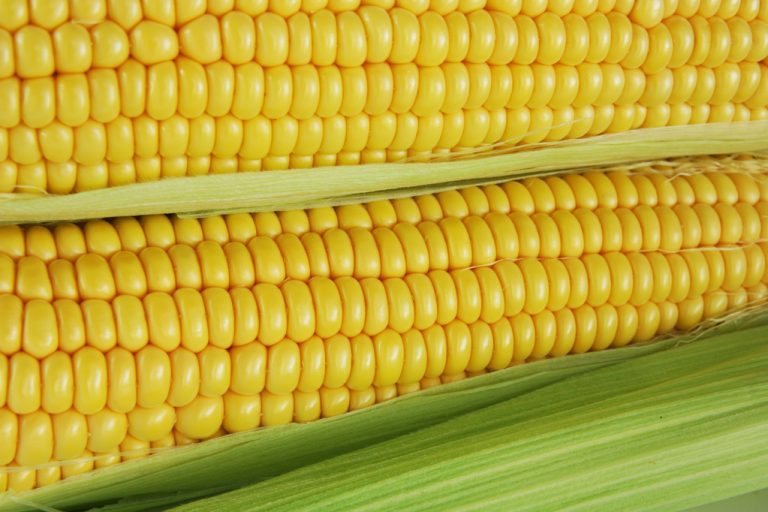The gluten-free flour can bind not only sauces and dumplings.
Corn Flour – gluten-free flour made from the kernel of corn
Maize flour is obtained from corn in various ways: In this country, the corn grain is usually dried and then ground. In other processes, the dried corn is first roasted before being dried and ground. Maize flour from Mexico is very special: there the corn kernels are first fermented before they are dried and ground. You can find out why this makes the flour healthier below.
Depending on the production method, cornmeal differs in colour, taste and nutrients. In most cases it is characteristically yellow in color, but sometimes it is relatively light to almost white. It usually tastes slightly sweet, sometimes with a nutty note – and the typical corn taste is usually still in the flour.
By the way, cornmeal, cornmeal and polenta are not the same thing: cornmeal is coarser than cornmeal. Polenta, on the other hand, is a porridge made from cornmeal. In a separate article we will show you how to cook polenta and use it to make polenta thalers.
Corn starch also differs from corn flour: For corn starch, the starch is washed out of the grain using a special process. You can read exactly how this works and how you can use cornstarch in our article on cornstarch.
Cornmeal: nutrients and health
If you have celiac disease or a wheat allergy, corn flour is an interesting alternative to wheat or spelled flour: corn flour is completely gluten-free. When baking, however, you cannot simply replace wheat flour with corn flour: the latter lacks the binding properties of gluten. More on that later.
Compared to other whole grain flours, corn flour has a relatively low protein content of around seven to nine percent. Instead, cornmeal contains a lot of carbohydrates – mainly in the form of starch. In addition, there are around five percent dietary fiber in corn flour. The exact nutritional values depend heavily on the manufacturing process.
Nutritional values of corn flour per 100 grams:
Energy: 344 kcal
Fat: 0.8g
Carbohydrates: 74 g
Protein: 7.7 g
Fiber: 4.8 g
With over seven percent protein, corn flour cannot compete with wholemeal spelled flour, but it can still serve as a source of vegetable protein.
One problem: corn kernels (like other grains) contain phytic acid, which locks in certain nutrients and makes them inaccessible to humans. If you ferment the corn kernels before grinding, phytic acid is broken down. The traditional Mexican method for this is called “nixtamalization”. It makes the cornmeal from Mexico particularly healthy.
Cornmeal in the kitchen: tips and recipes
Corn flour is particularly popular in Mexican cuisine: Tortillas and nachos are well-known products made from corn flour in this country. In some South American countries, corn cakes are made from corn flour.
You can also thicken soups and sauces with cornmeal and use it as an ingredient in dumplings.
Corn flour does not contain gluten and is an alternative to wheat flour. However, you cannot bake pure corn bread without gluten. Instead, you can combine corn flour with other gluten-containing flours and thus enhance the look and taste of your home-baked bread: You can easily replace about ten percent of the flour with corn flour. This way you can bake delicious cornbread.
You can also make pudding from cornmeal. This is significantly finer than polenta, but not quite as homogeneous as cornstarch pudding.

Make and buy cornmeal yourself
If you have a strong grain mill, you can make corn flour yourself: To do this, you must first dry the corn kernels and then grind them as finely as possible. However, it is said that some grain mills are clogged by the corn and then no longer work properly. The easier option is therefore to buy ready-made corn flour.

